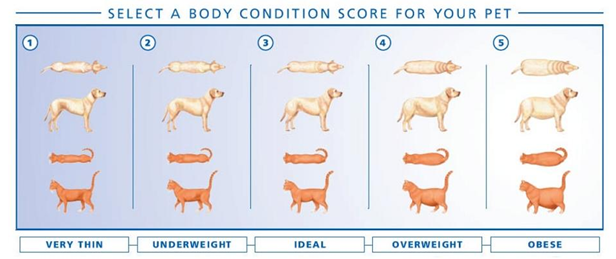Is your pup getting older? Is he slowing down? He may have some arthritis after walking many miles by your side all these years. But don’t worry! You can help, with some guidance from your veterinarian. We may be able to get your best friend feeling like a puppy again.
What is arthritis?
Arthritis is a common problem with dogs and people as we age. Arthritis literally means “inflammation of the joint”, which is a very broad category. It has many sub-categories, including degenerative, infectious, inflammatory, and metabolic arthritis. In dogs, we most commonly see infectious (hello, Lyme disease!) and degenerative arthritis. This article will focus on degenerative arthritis, also known as osteoarthritis.
Osteoarthritis occurs when there is a breakdown of the cartilage in a joint. Cartilage normally helps to cushion and smooth movement between bones. When it breaks down, the bones can rub against each other. This can lead to stiff, painful joints, and weakening of the muscles around the joint (due to disuse). Associated inflammation can result in changes to the surrounding bones themselves. All joints can be arthritic (even the tiny bones in the ears!), but in our canine companions, the most common problem areas are hips, knees, and elbows.
There are many predisposing factors to arthritis– some we can change and some we cannot. Many dogs over 40 lbs. struggle, and the bigger they are the more problems they will have. It’s a lot of pressure on those joints! Abnormal bone conformation (e.g. the bowed little legs of a basset hound) are also more predisposed, since they carry pressure differently. Obesity is a major predisposing factor, and we will touch on this more later. Further, old injuries to surrounding tissues or bones can lead to arthritis in those joints. Genetics can play a role, as can bad luck.
Signs of Osteoarthritis
As your dog ages, you may see her start to ‘slow down’. This is the first sign of osteoarthritis. She may be slower to get up out of bed, or jump on the couch less. Your running buddy may not run as much, or may come back from a long run limping. She may have the most difficulty first thing in the morning, and then seem to ‘warm up’ out of it throughout the day. These all can indicate arthritis, especially early on, but can also be signs of heart disease, infectious diseases, and disc herniations. It is especially important to have a good physical examination performed by your veterinarian to rule out these other causes of problems before assuming osteoarthritis is the culprit!

As arthritis progresses, your dog may start to limp more regularly, or hold his weight in a way to alleviate joint pressure. Over a long period of time, these adjustments will lead to muscle wasting in affected limbs, and muscle building in the limbs which feel good. Sometimes, when the muscles get very weak, just standing can cause the muscles to tremble a little bit. There are other causes of muscle trembles in old dogs, so please contact your vet if you notice this.
Alright, my dog has arthritis, how can I help?
Weight Control
The single most important factor in helping an arthritic dog (or cat for that matter) is keeping her at a lean body weight. The majority of dogs (and cats) in the United States are overweight or obese, and this trend is continuing upward! Dogs with a normal amount of body fat, or even a slightly thin dog, will have a much easier time moving around. Not only is it less pressure on the joints overall, but fat itself is an inflammatory mediator. This means that the fat in your cells produces inflammation! That is a double whammy for your dog’s joints.
Every breed is different, but in most dogs, you should be able to see the last rib, and none of the spine. There should definitely be a tuck up at the belly, and from above, your dog should have an hourglass figure. If you are not sure about your dog, please ask your veterinarian at his next visit!
If your dog is overweight, weight loss can be tricky. It is hard to outrun a bad diet, so make sure you are not feeding too much first. Remember, most dogs need a lot fewer calories than we do, so a piece of cheese or a spoon of peanut butter can add on the pounds very quickly!

One lifetime study in dogs did show that Labrador Retrievers with an ideal or slightly underweight body condition lived on average for 2 years longer than their overweight counterparts. That’s a long time to spend with your best friend!
Exercise
The next best thing for those old joints is regular, low impact exercise. This can be as simple as a 30 minute walk daily. It is especially hard on arthritic joints to be a ‘weekend warrior’, so even low impact exercise should be very regular. If you miss a session, do not try to make it up the next day. Physical therapy is available for dogs, too. They can be taught to walk on a water treadmill (especially good for very overweight dogs), stand on objects requiring more balance, and walk over obstacles. All of these help build muscle strength without high impact to the joints.
In the winter, it can be hard to get out for those regular walks, so if you are starting up again now that the weather is warming up, make sure to start small. You can also do some low impact exercises from the comfort of home! Try puppy pushups and sit-ups with your dog.
For a puppy push up, have your dog lay down, and then command your dog to sit. Most dogs will not know what to do at first; it’s weird for us to ask them to go from a lay down to a sit. Do this ten times per session, a few sessions per day, and your dog will be a champ in no time!
For a puppy sit-up, have your pup start in a sitting position, then have him stand up. This may be a new command for him, so it may take time to learn. Like a sit up, this is something that is low impact and helps build muscle mass without braving the winter storms. In a dog with minimal arthritis, you can do this ten times in a row, similar to the sit ups. In dogs with severe hip issues, ten times may be too much at first, and he may only be able to do a few at a time. Be patient, and again, start slow!
Supplements
There are a million joint supplements for dogs on the market right now. You may be wondering which ones to choose. There are a few which have a lot of science behind them, and many that do not.
Fish oils are a wonderful place to start. Fish oil has two components in it that we look for: Omega-3 and Omega-6. These compounds are very good for the joints, hair coat, kidneys, and seem to have some beneficial effects on the brain! Unfortunately, the supplement industry is not regulated, so some fish oils will be sub-par, or not even have the ingredients listed (this is true of human supplements, too, by the way). We recommend a few brands of fish oil, which test their products regularly: Vetoquinol Triglyceride Omega-3 Fatty Acid Liquid, Welactin Fish Oil, and Nordic Naturals. All of these can be purchased over the counter at a pet store, online, or through your veterinarian. Many other products do not have as much of the omegas packed into them as fish oil, so beware!
Glucosamine/chondroitin is also a great supplement for the joints. These two supplements work well in combination to help the cells which produce and maintain cartilage. This helps reduce bone to bone contact, and results in less pain and discomfort. Adequan is a high potency, injectable version of this supplement, when all else fails. This is something you may want to discuss with your veterinarian to ensure your pup is a good candidate.
CBD oil is currently being studied, and does show some promise for being effective in helping to reduce joint pain. However, the CBD industry for pets is very poorly regulated, and the doses are still poorly understood, so it is best to talk to your veterinarian before starting. For more information on CBD oil in pets, see our previous blog post all about it: https://www.creaturehealth.com/2020/11/13/cbd-in-dogs-whats-the-scoop/
All supplements take about a month to take effect and show some improvement. Do not give up! Many times the improvement is gradual, so consider also keeping a log of behaviors to help prove (or disprove) that they are working.
Pain medication
Eventually, there will come a time when exercise, diet, and supplements are not enough. That is when we start the long term pain medications.
We often start with a medication called gabapentin due to its safety profile. This is a medication which treats pain at the neuron level, so it does nothing for inflammation. It may cause a little bit of sedation, and at high doses, a wobbly gait, but is very safe. You can slowly increase the dose to help reduce these signs as well.
After gabapentin, we consider starting anti-inflammatory medications (similar to ibuprofen in people). These medications work very well when given regularly, and reduce the actual inflammation in the joint. This makes them the ideal medication for arthritis. But they do carry some risks. They can be particularly hard on the kidneys and liver, so your vet will likely require regular blood work to continue these medications long term. In rare cases, they can cause gastric bleeding as well, which can be fatal. If being used long term, it is very important to have regular veterinary check ups and blood work to prevent the problems. Examples of these include Rimadyl, Previcox, and Galliprant. Of these, Galliprant is considered the safest and most specific for arthritis, but does not reduce other causes of pain (e.g. after a surgery).
As in humans, the last resort for pain control is often opioids. Although we do not see the addiction in dogs as we do in people (they cannot give themselves the medication), they are expensive, and can affect various organs in the body. Tramadol is the most commonly used for long term pain control, but does not work in some dogs. A new study has come out indicating that low dose, injectable ketamine can be used as well, for severe arthritis cases. Ketamine reduces the ‘wind up’ pain associated with chronic issues.
Concerned your canine companion has arthritis?
Make an appointment today to talk to your vet. Arthritis is something that we can manage together!








